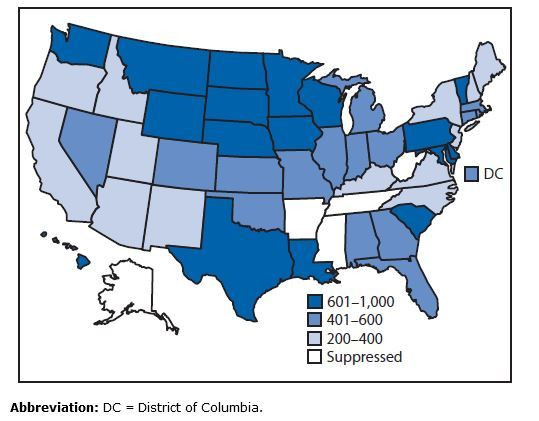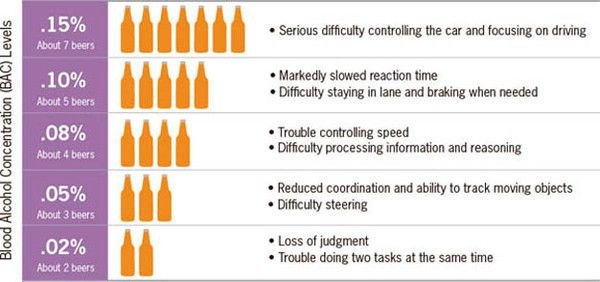One-Third Of All Fatal Car Crashes Caused By Drunk Drivers, Yet 4 Million Americans Still Drive Under The Influence

It can happen to you while you are biking beside a highway, walking home from the grocery store, laughing in the passenger’s seat, or waiting for a traffic light to change. Tragically, it happens every day, multiple times a day. During 2013 alone, a total of 10,076 Americans died in car accidents where a driver was above the legal limit for alcohol, according to the latest weekly report from the Centers for Disease Control and Prevention (CDC).
In fact, one-third of all crash fatalities in the United States are caused by legally drunk drivers, those whose blood alcohol level (BAC) climbs above 0.08 g/dL, CDC says. Yet, despite the many roadside memorials strewn across the nation's highways, many people admit they themselves have taken the driver’s seat after drinking too much.
The map below shows the annual rate of self-reported alcohol-impaired driving episodes per 1,000 adults during 2012.

In fact, CDC estimates 4.2 million U.S. adults (1.8 percent) reported driving while impaired at least once in the preceding month. Of those who confess to driving under the influence (DUI), 58 percent reported doing so only once during the past 30 days, 23 percent said at least twice, and 17 percent said three to 10 times. Meanwhile, a small percentage of respondents said they drove under the influence at least once a day.
Annually, the experts estimates 121 million alcohol-impaired driving “episodes” occur, with a national rate of 505 episodes for every 1,000 people. Men account for most — 80 percent — of these incidents while younger men (between the ages 21 and 34) contributed 32 percent to the total. Binge drinkers also are inclined to drive while alcohol-impaired. Nearly 85 percent of the people who self-reported DUIs also said they binge drink. As a result, CDC concludes the four percent of adults who say they binge at least four times each month accounted for 61 percent of all alcohol-impaired driving episodes.
For most people, men who drink five or more drinks in about two hours and women who drink four or more drinks would be binging.

While death may be the worst thing that can happen, other horrifying consequences also may result when booze and cars are mixed. After a pleasant Sunday visit with her family, Shawn Brown was just a few miles from her house when a drunk driver, speeding 60 miles per hour on the wrong side of the street, struck her car head on, the MADD website attests. Everything in Brown’s trunk flew out of the back of her car and landed in the street, the impact was that hard. Brown’s 10-week-old son died, Brown’s sister was seriously injured, and Brown herself suffered a fractured skull. Despite being pronounced dead twice, she miraculously survived.
Alcohol-caused crashes resulted in 326,000 non-fatal injuries, finds the most recent revision of the National Highway Traffic Safety Administration report. Surviving victims may suffer spinal cord injuries, traumatic brain injuries, burns, and fractures, any of which may cause disability, pain, discomfort — and money troubles in some cases — for the rest of their lives. On average, the Traffic Safety Administration estimates, two out of every three people will be involved in an alcohol-impaired car accident at some point in their lives.
Naturally, the number of drivers in a state will increase the odds of an alcohol-impaired car crash, so DUI fatalities were highest in Texas (1,337), California (867), and Florida (676). Proportionally, the state where alcohol-impaired driving contributed to fatalities most was South Carolina.



























